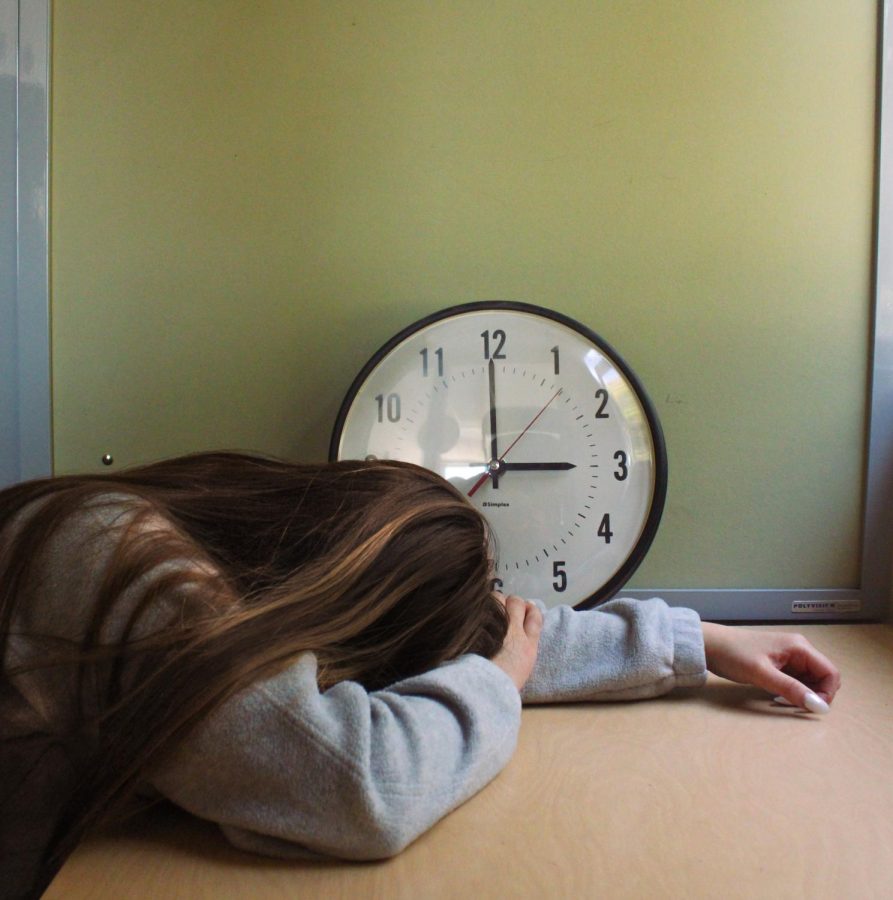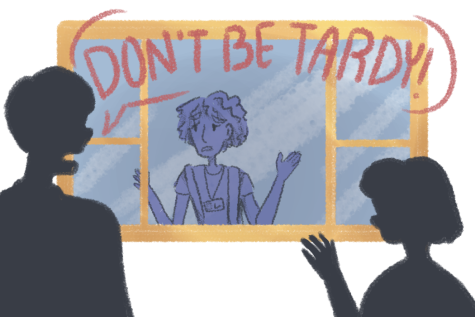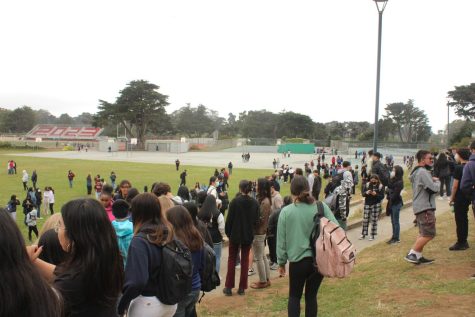Lowell should get rid of the block schedule
As I look around my calculus classroom on Thursday afternoon, all I see are blank stares, half-asleep students, and everyone checking the clock. The entire class, including the teacher, is waiting for the intolerably long class period to be over, but we still have over 30 minutes left. When my teacher struggles to find other material to cover during class, he inevitably gives us “work time,” which goes to waste for many.
Ever since the implementation of the block schedule this year, Wednesdays and Thursdays have become my most dreaded days of the week due to their hour-and-a-half-long classes. Instead of these long classes, all classes should be kept to 50 minutes long to keep students more engaged. With shorter class times, the school day on Wednesdays and Thursdays could end earlier, allowing students time to foster their personal growth outside of school.
One-and-a-half-hour-long classes are an ineffective learning method because the extra time in longer classes is often used unproductively. Most Lowell teachers structure their lessons for a 50-minute class period, which leaves almost half of the class unaccounted for. If teachers try to pack more material into this extra class time, this can impair learning as there will be too much information learned at once to process. Students would benefit from more time between classes to digest the material and think of meaningful questions to ask later in class. Long classes also lead to boredom and sluggishness, which is an even bigger waste of time. More class time does not automatically result in additional learning if students do not engage with and pay attention to the material. Shorter class periods would allow students and teachers to use class time more productively and improve overall learning. Students would benefit from a limit in individual class time and a reduction in total daily instructional minutes.
Under the current class schedule, instructional minutes, studying, and homework can occupy a student’s entire day, limiting their ability for non-academic growth.
Under the current class schedule, instructional minutes, studying, and homework can occupy a student’s entire day, limiting their ability for non-academic growth. Without time in the day to explore activities outside of class, students’ personal growth and exploration of interests are hindered. Students could spend the extra time outside of school on their hobbies, gaining real-world experience, or with their family and friends. These activities benefit students’ growth as people than sitting in a classroom where they cannot fully concentrate. Adolescence is a critical period of self-discovery and identity formation, where people grow immensely. In a strict school environment, students can feel limited to conventional beliefs that other students may hold, like needing to go to college and then pursuing a traditional job. The minute a student steps out of school, the confines of grades and good impressions would be removed, permitting free self-expression. A shorter school day would allow students to try more activities not offered at school, like volunteering at different organizations or getting a job. These experiences are important factors for students to figure out what they enjoy and want to do after they graduate, but they cannot be obtained while confined in a classroom.
Not only would more time outside of the classroom let students get to know themselves more, but they would also have extra time for interactions with family and friends. A longitudinal study by Harvard showed a strong correlation between quality relationships and happiness. Participants who were highly satisfied with their interpersonal relationships lived longer and happier lives. For many Lowell students, the little free time that comes with an extended school day is often spent on studying and homework, isolating themselves. Shorter school days would allow teens to spend more time with their families and friends to develop more meaningful relationships, a key ingredient to a happy life.
Shorter school days would allow teens to spend more time with their families and friends to develop more meaningful relationships, a key ingredient to a happy life.
Although some argue that longer class times promote more learning, this is not the case. In the 2018 Programme for International Student Assessment (PISA), the U.S. placed 22nd out of 79 participating countries in 15-year-old students’ science, reading, and math performance. Students that continually outperform the Americans are from Singapore, Finland, and Ireland, all of which have shorter school days and classes than we do. According to California Education Code 46142, the minimum instructional day must be 240 minutes, or six hours, long. In Finland, students get a 15-minute break for every 45 minutes of class, and the average school day is only five hours long. The length of the average school day in Singapore, Germany, Ontario, Estonia, and Japan are all under six hours compared to the U.S. at 6.8 hours. All of these countries scored higher than the US in academic performance, according to the 2018 PISA, indicating that longer classes and school days do not equate to a better education. The minimum instructional minute requirement should be shortened to improve students’ lives overall.
Nonetheless, I understand that education is a privilege, and we are fortunate to have access to it in the first place. Long classes and an extended school day would be highly coveted by many other kids. Time spent in school is still extremely valuable, and the opportunity to attend any type of school should be cherished.
High school should be a time for exploring interests, hobbies, and relationships. Instead, students are stuck in classrooms for hours where they can’t pay attention to learning, preventing them from growing as a person. This could be remedied by shortening class times and the school day to under six hours long. Students would be happier, healthier, and more productive.

Victoria Pan is a senior who joined The Lowell in the spring of 2022. When she isn't stressing about school, she is usually traveling, reading, or drinking boba. Victoria especially loves visiting national parks (in any country) and Disneyland (where she ends up walking more than she does in the national parks).

Ava is a senior at Lowell. When not taking photos, she can be found reading, writing, or listening to her carefully curated playlists when she should probably be doing her homework. Ava also likes thrifting, drinking green tea, and watching Greta Gerwig movies.












